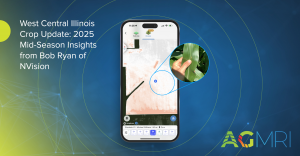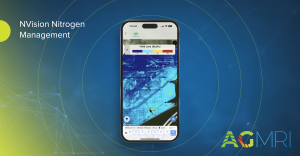Spotting emergence issues in the field early can help expand that narrow window for replant. Last year, AGMRI helped a farmer not only identify the emergence issue, but also helped problem-solve what was causing it.
The end result helped the farmer reassess field equipment and make changes prior to harvest.
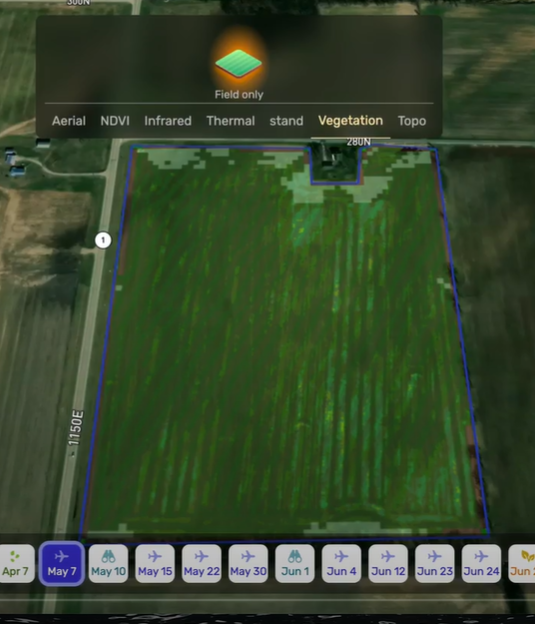
An Emergence Alert from AGMRI sets you up to examine the issue more thoroughly.
“The alert is only one step in the process, this particular alert showed emergence failures in rows,” says Conner Schmidt, account manager for Intelinair.
“Looking at the images, emergence challenges that are nature-made don’t appear in perfect rows – whether it’s soil or elevation related. We knew there was something out of the ordinary here.”
Schmidt says that AGMRI has the ability to do comparison images side-by-side to help identify when an issue in the field happened.
The comparisons were able to go back to note something happening at harvest.
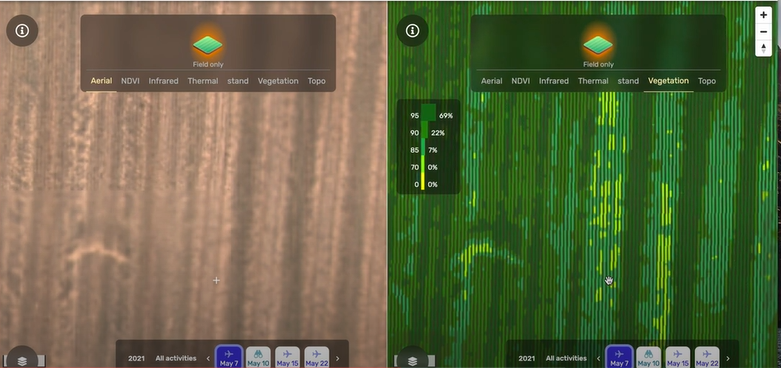
The row-level images provided through AGMRI allows trained agronomists to take a look at specific areas in the field that are showing alerts and add personal knowledge.
“Knowing what is happening in the field helps in problem-solving with alerts and images,” adds Schmidt. “The field with emergence issues was planted with corn and the farmer practiced strip tillage. We were able to do note that it was likely soybean residue that wasn’t turned under causing this year’s issue.”
When speaking with the farmer, he noted there were two different combines running at harvest in that field. Given the different spreaders and choppers on the equipment, the customer was able to narrow down the issue to a specific combine.
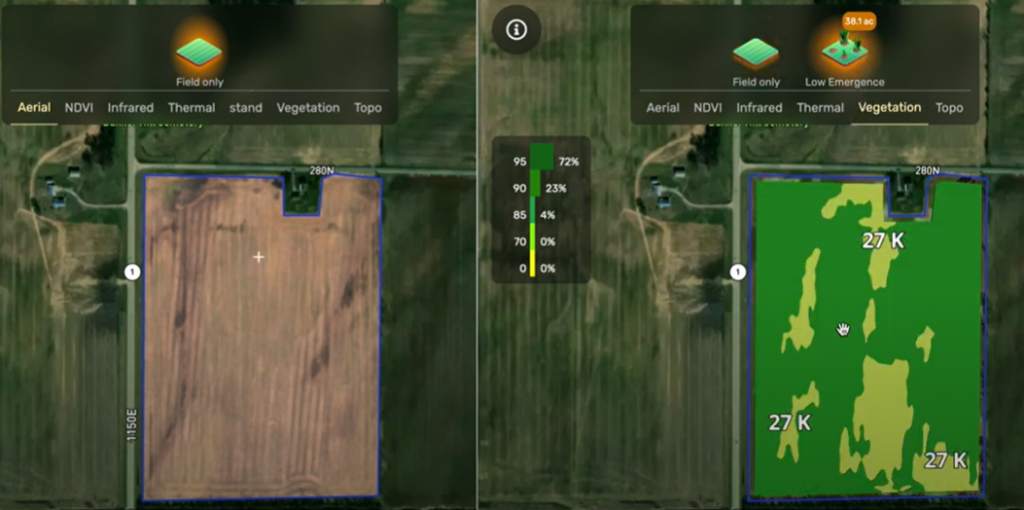
Poorly distributed residue caused differences in plant emergence across the farmers’ operation – 27,000 vs. 29,000 in the sample field.
After assessing the situation, the farmer opted to trade in the combine mid-May to better manage residue across his operation.

